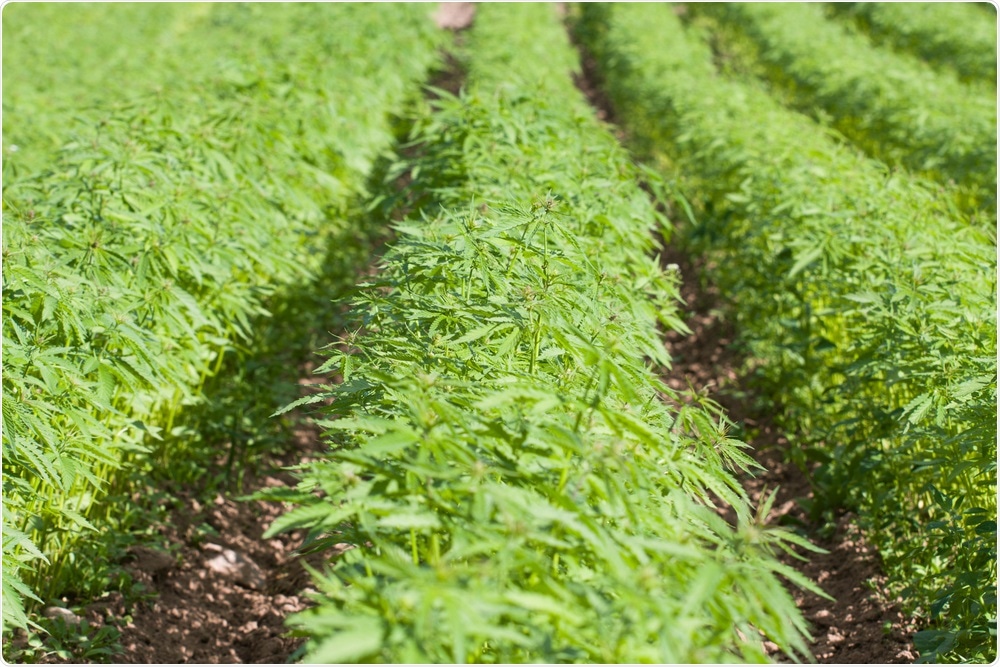Despite the popularity of hemp seed oil products, there are currently no standardized analysis techniques. To this end, a group of Italian researchers recently published a study on the accuracy of liquid chromatography coupled with high-resolution mass spectrometry to identify the cannabinoid profile of ten different hemp seed oil products.
 Andris Tkacenko | Shutterstock
Andris Tkacenko | Shutterstock
Not all hemp oil products are created equal
Both hemp and cannabis can be obtained from the Cannabis sativa L. plant species. Despite their shared origin, hemp and cannabis differ greatly in their chemical composition. For example, the phytocannabinoids of cannabis, most notably of which include cannabidiol (CBD) and tetrahydrocannabinol (THC), have been associated with various pharmacological properties, whereas hemp seeds are completely void of these cannabinoids.
During cultivation, the external surface of hemp seeds can be contaminated by the sticky glandular trichomes of the cannabis phytocannabinoids. If hemp seeds are not cleaned properly, unwanted cannabinoid concentrations can be present in their oil products.
In fact, some commercial hemp seed oils have been found to contain total THC and CBD concentrations of more than 10 and 1000 parts per million (ppm), respectively.
Evaluating the cannabinoid profile of hemp
While several methods exist for the determination of THC and CBD concentrations within hemp seed oils, there continues to be a lack of techniques capable of providing researchers with a comprehensive cannabinoid profile.
Since there are at least 120 different phytocannabinoids that have been confirmed to exist within the Cannabis sativa L. plant, a reliable and accurate analytical technique that can quantify these chemicals is highly sought-after.
In their Frontiers in Plant Science study, the team of Italian researchers began this endeavor by utilizing a chromatographic method they had previously found to be suitable for providing a full chemical profile on cannabis oil medicinal extracts. This chromatographic technique interfaces an ultrahigh-performance liquid chromatography (UHPLC) with a mass spectrometer that is equipped with a heated electrospray ionization (HESI) source.
All raw data included peak detection, retention time correction, profile alignment and isotope annotation. A multivariate statistical analysis (MSA) was also performed in order to differentiate any significant differences that existed the between different hemp seed oil products.
There were 'significant differences' between different hemp oil products
Since there is limited literature on the fragmentation of different cannabinoids using an electrospray ionization source, the researchers discussed their spectra in terms of different cannabinoid deuterated standards, which included CBD-type, THC-type, cannabinol (CBN)-type, cannabigerol (CBG)-type and cannabichromene (CBC)-type.
It is important to recognize that this work is especially unique due to their analysis that extended beyond the CBD-, THC- and CBN cannabinoid classes.
Through the use of this cutting-edge technology, the researchers were able to identify 32 different cannabinoids present in 10 different commercial hemp seed oils. The researchers found that there were significant differences between the acidic and neutral forms of each cannabinoid.
Although the cannabinoids only represented a small percentage of all hemp seed oil components, the MSA data illustrated that these chemicals still actively contributed to the chemical nature of each oil sample.
Where do we go from here?
The HPLC-HRMS technique discussed here confirmed the contamination of 10 different hemp seed oils with different cannabinoids. Little research has been done on cannabinoids outside of those within the CBD and THC classes, thus, this technique provides insight into the potential of these contaminants to cause relevant nutraceutical effects when present in hemp seed oils.
The vast differences between the chemical composition of each hemp seed oil sample stresses the necessity for improved analytical methods that will allow researchers to better understand the health benefits associated with all Cannabis components.
Sources:
Citti, C., Linciano, P., Panseri, S., Vezzalini, F., Forni, F., Vandelli, M. A., & Cannazza, G. (2019). Cannabinoid Profiling of Hemp Seed Oil by Liquid Chromatography Coupled to High-Resolution Mass Spectrometry. Frontiers in Plant Medicine 10(120). DOI: 10.3389/fpls.2019.00120.
Acknowledgements:
The research discussed here was supported by the UNIHEMP research project “Use of iNdustrIal Hemp biomass for Energy and new biochemicals Production.” Partial support was also provided by the “Development of a cannabis based galencial preparation” FONDO DI ATENEO PER LA RICERCA ANNO 2017.